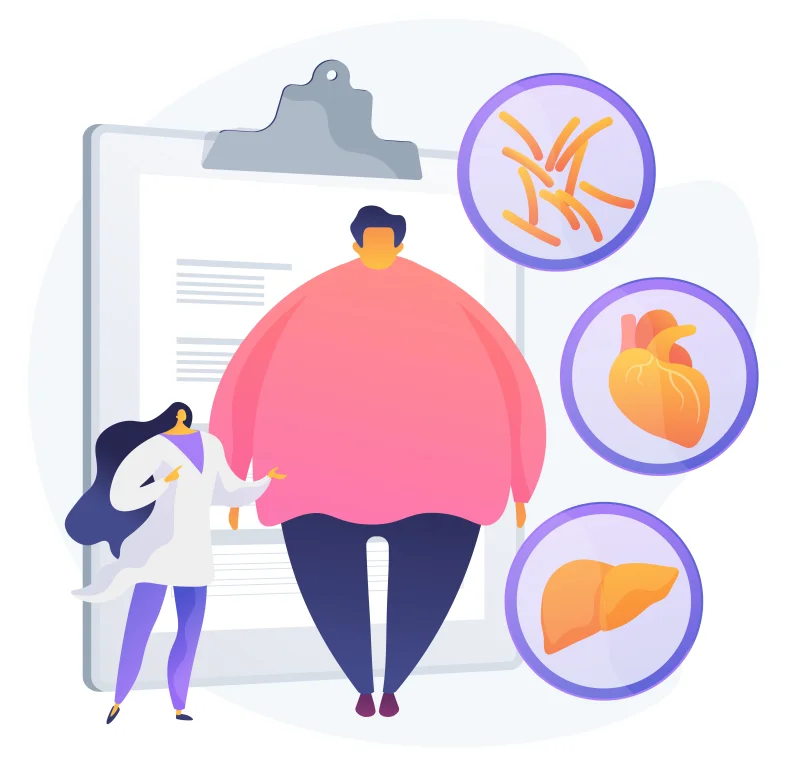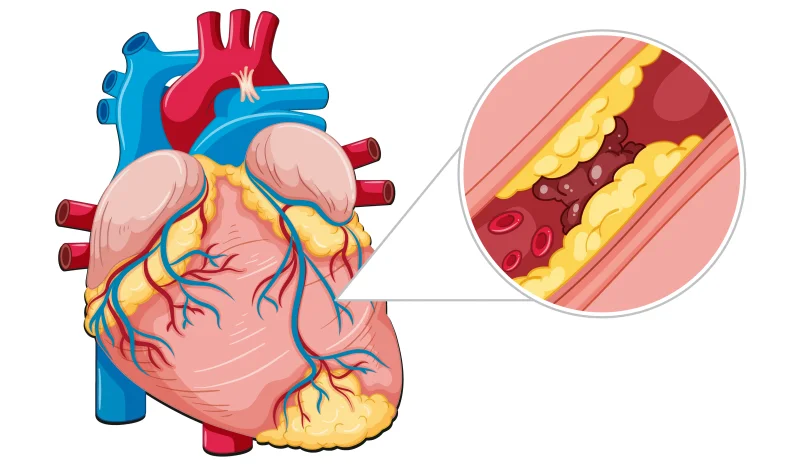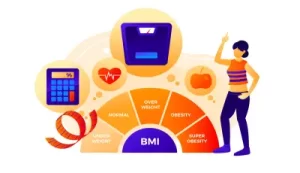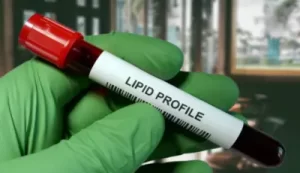If you prioritize your health, you’re likely familiar with the term cholesterol. India has emerged as the global capital for chronic heart disease, witnessing a notable rise in sudden cardiac fatalities, especially among young adults. The lack of understanding regarding cholesterol is proving to be deadly.
Let’s take the initiative to educate ourselves about cholesterol: its various types, functions, and dispelling associated misconceptions. Being informed about our body can empower us to adopt healthier lifestyles.

Table of Contents
What is Cholesterol?
Cholesterol is a type of lipid (a fat-like substance) that circulates in our blood. It is essential for building cells and producing hormones in our body; however, high levels of cholesterol can lead to blockages in our blood vessels, which increases the risk of heart disease and stroke.
Role of Cholesterol in Our Body
- Cell membrane structure: Cholesterol helps maintain the structural integrity and fluidity of cell membranes, allowing cells to function properly.
- Hormone synthesis: Cholesterol is a precursor for the synthesis of essential hormones such as estrogen, testosterone, and cortisol, which regulate various physiological processes in the body.
- Vitamin D synthesis: Cholesterol is converted into vitamin D in the skin upon exposure to sunlight. Vitamin D is essential for calcium absorption that leads to healthy bone and teeth.
- Bile acid synthesis: Cholesterol is used by the liver to produce bile acids, which aid in the digestion and absorption of dietary fats and fat-soluble vitamins.
- Myelin sheath formation: Cholesterol is a component of the myelin sheath, a protective covering that surrounds nerve fibers and facilitates efficient nerve signal transmission.
Good Cholesterol & Bad Cholesterol
Cholesterol is transported in our bloodstream primarily by lipoproteins, which are complex particles made of lipids and proteins. There are two main types of lipoproteins that transport cholesterol:
- Low-density lipoprotein (LDL): LDL carries cholesterol from the liver to the cells throughout the body. It’s often referred to as “bad cholesterol” because high levels of LDL can lead to the buildup of cholesterol in the arteries, increasing the risk of heart disease. Optimal LDL level is 100 mg/dL or lower. Patients with heart disease, metabolic syndrome and non-alcoholic fatty liver disease (NAFLD) should aim to keep their LDL cholesterol levels below 70 mg/dL.
- High-density lipoprotein (HDL): HDL helps remove excess cholesterol from the bloodstream and tissues by transporting it back to the liver, where it can be recycled or expelled as waste from the body. It’s typically called “good cholesterol” because higher levels of HDL are associated with a lower risk of heart disease. Optimal HDL level is 60 mg/dL or higher. Below 40 mg/dL is a high risk for cardiovascular diseases.
Note: There is a lipoprotein subtype known as VLDL (very low-density lipoprotein). VLDL primarily transports triglycerides (fat), while LDL mainly carries cholesterol (lipid). Once VLDL delivers triglycerides to tissues, it undergoes changes in its composition, becoming LDL. Similar to LDL, elevated levels of VLDL are considered bad for your heart.
How Does Cholesterol Work in Our Body?
- Production: Cholesterol is synthesized (produced) primarily in the liver, but it can also be obtained from dietary sources. The liver regulates cholesterol production based on the body’s needs.
- Transport: Once synthesized or absorbed from the diet, cholesterol is packaged into lipoproteins, primarily LDL. LDL transports cholesterol from the liver to cells throughout the body.
- Reception: Cells take up cholesterol from LDL particles via specific receptors (doors) on their surface. Once the cholesterol reaches inside the cells, it is used by the cells for various functions, such as building cell membranes and producing hormones.
- Reverse Transport: HDL collects excess cholesterol from cells and tissues and transports it back to the liver in a process known as reverse cholesterol transport.
- Excretion or Recycling: In the liver, cholesterol is either broken down and turned into bile acids, which aid in fat digestion, or it is recycled and sent back into the bloodstream for further use.
Cholesterol’s Effects on Our Heart-health
Cholesterol, often dubbed as the silent killer, plays a significant role in our health. While it’s crucial for various bodily functions, imbalanced cholesterol levels can pose serious health risks. One of the primary concerns associated with cholesterol is its impact on cardiovascular health.
High level of bad cholesterol can lead to the accumulation of plaque (sticky deposit) in the arteries, a condition known as atherosclerosis. Over time, this buildup can narrow the arteries (tube), restrict blood flow, and increase the risk of heart disease and stroke.

Cholesterol isn’t solely influenced by genetics; lifestyle factors also play a significant role. Diets high in saturated and trans fats, lack of physical activity, smoking, and excess weight can all contribute to elevated cholesterol levels.
Fortunately, managing cholesterol levels is within our control. Making simple, yet impactful, lifestyle changes can significantly reduce the risk of developing heart disease. Adopting a heart-healthy diet rich in fruits, vegetables, whole grains, and lean proteins, while limiting saturated and trans fats, can help lower LDL cholesterol levels.
Regular physical activity is another essential component of cholesterol management. Exercise not only helps maintain a healthy weight but also boosts HDL, the good cholesterol, which helps remove bad cholesterol from the bloodstream.
Cholesterol screenings on a regular basis are essential for early detection and intervention. By working closely with healthcare professionals, individuals can develop personalized strategies to manage cholesterol levels and reduce the risk of heart disease. By adopting a heart-healthy lifestyle and prioritizing cholesterol management, we can safeguard our cardiovascular well-being and enjoy a longer, healthier life.
Myths and Facts About Cholesterol
Cholesterol is often shrouded in misconceptions, leading to confusion about its role in our health. Let’s debunk some common myths and uncover the facts about cholesterol:
- Myth: All cholesterol is bad for you.
- Fact: Cholesterol is essential for various bodily functions, including cell structure and hormone production. It’s the balance of different types of cholesterol that matters; high levels of LDL cholesterol can increase the risk of heart disease, while higher levels of HDL cholesterol are beneficial for heart health.
- Myth: If you’re thin, you don’t need to worry about cholesterol.
- Fact: While weight can be a factor in cholesterol levels, thin individuals can still have high cholesterol due to genetic factors, poor diet, or lack of exercise. Cholesterol management is important for everyone, regardless of body weight.
- Myth: Eating foods high in cholesterol directly raises your blood cholesterol levels.
- Fact: While dietary cholesterol can contribute to increased cholesterol levels in some individuals, saturated and trans fats have a more significant impact on blood cholesterol levels. It’s important to focus on reducing intake of these unhealthy fats rather than solely avoiding cholesterol-rich foods.
- Myth: If you have high cholesterol, you’re doomed to develop heart disease.
- Fact: High cholesterol is a risk factor for heart disease, but it’s not a guarantee. By managing cholesterol levels through lifestyle changes and, if necessary, medication, individuals can significantly reduce their risk of heart disease and improve their overall health.
- Myth: Medications are the only way to lower cholesterol.
- Fact: While medications can be effective in managing cholesterol levels, lifestyle modifications such as a healthy diet, regular exercise, and quitting smoking can also have a profound impact. In many cases, lifestyle changes may be sufficient to achieve optimal cholesterol levels.
We believe, by dispelling these myths and understanding the facts about cholesterol, people can make informed decisions about their health and take proactive steps to improve their heart health.
Conclusion
Deepening our understanding of cholesterol empowers to make well-informed decisions regarding our well-being. By debunking the misconceptions and embracing verified information, we gain the ability to effectively manage cholesterol levels. It’s crucial to recognize that it’s not about being afraid of cholesterol, but rather about achieving equilibrium through adopting healthy lifestyle choices and consistently monitoring our health. Armed with this awareness, we can prioritize cardiovascular health, lower the likelihood of heart disease, and lead lives that are vibrant and satisfying.




